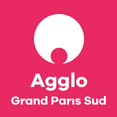This interview is offered in collaboration with Madmagz Com'In, the leading technology agency specializing in internal communication. It was first published in French on Com'In, their reference site on internal and digital communication that help internal communication professionals meet the challenge of digital with advice, testimonials, practical cases and trends.
 Founded in 2016, the Grand Paris Sud urban agglomeration is an economic and cultural hub of the Greater Paris region. Collaboration was key in turning this project into a reality: collaborative workshops increase both productivity and engagement of all relevant parties. To learn more about it, we sat down with Franck Plasse, advisor to Grand Paris Sud vice-president Michel Bisson, who explained the collaborative approach underlying this ambitious urban planning project.
Founded in 2016, the Grand Paris Sud urban agglomeration is an economic and cultural hub of the Greater Paris region. Collaboration was key in turning this project into a reality: collaborative workshops increase both productivity and engagement of all relevant parties. To learn more about it, we sat down with Franck Plasse, advisor to Grand Paris Sud vice-president Michel Bisson, who explained the collaborative approach underlying this ambitious urban planning project.

Can you tell us what the “Grand Paris Sud” project is all about?
The “Grand Paris Sud” urban agglomeration was founded in 2016 by 24 municipalities. From the start, mayors of all these districts knew very well they needed to build a territorial structure that could embody the project they wished to promote, create a common vision of their shared identity and determine the main operational goals. Over one year of collaborative work brought together all the relevant stakeholders: the conurbation’s elected officials and personnel, municipal representatives, the public, the associations, the private sector and all the other parties involved.
Why is using collaborative processes relevant for this project?
There are two main reasons. And that works for any given project. First, giving the floor to a wide variety of opinions and points of view radically improves the overall efficiency and productivity: gathering the inputs of all the stakeholders will enable you to create new synergies and come up with innovative solutions. Moreover, bringing together all the parties involved helps you pave the way for what lies ahead: when the project is co-constructed from the very start, everyone can relate to it in a more personal way and be more actively involved. The project literally becomes their own.
What are the most efficient methods and tools? Why?
A lot of my work is based on gamification: using games, recreational activities or other kinds of entertainment tools.
My preference goes to card games, which are both extremely easy to implement and have great potential to create new kinds of dynamics. I also use a tech-device that I can now hardly do without: Stormz, an incredibly efficient Meccano to generate collaborative workshops on tablets.
How do your collaborative workshops usually unfold?
I can give you an example of a typical problem-resolution collaborative workshop designed for a team already comprised (a half-day session).

- Sequence 1: Guidelines (15’): Presentation of the workshop’s topic, sequence and method.
- Sequence 2: Perception of the problem (30’): Using the problem map, a poster showing a visual representation of problems typology, to express individual opinions regarding the workshop’s topic, followed by discussions in small groups.
- Sequence 3: Search for solutions (30’): With the takeaways of sequence 2, and using picto-soluces, cards showcasing visual representations of bricks of solutions, to promote individual critical thinking regarding potential solutions, followed by discussions in small groups.
- Sequence 4: Problem-solving (30’): Using Stormz and the takeaways of sequences 2 and 3 to start pinning down the solutions imagined by each group.
- Sequence 5: Assessing solutions (30’): Using Stormz and the takeaways of sequence 4 to evaluate, on the tablets and within each group, the solutions imagined by their peers.
- Sequence 6: Results consolidation and debate (30’): With the takeaways of sequence 5, proceed with a group discussion and debate about the ranked inputs.
- Sequence 7: Decision-making and conclusion (15’): With the takeaways of sequence 6, collectively agree on the retained solutions (for a second work session and/or immediate implementation, depending on the context).
How frequently do you organize them? Who are the participants?
It depends. The only unshakeable parameter is that the participants are the stakeholders. I enjoy organizing events to leverage everyone’s efforts and inputs in a short period of time. For the “Grand Paris Sud” conurbation project, I designed a half-day event where several hundreds of municipal counsellors worked together simultaneously … and remotely from all the 24 cities; I also organized twelve summer brainstorming workshops for the personnel at all the learning centers of the territory.
Did you run into any major obstacles when implementing the collaborative actions?
Not really. The design phase sometimes requires you to be extremely meticulous to create a blueprint that’s both flexible and robust enough. That’s where a tool like Stormz is helpful. Sometimes, I also have to regain the trust of our partners or participants who can be skeptical due to previous failed experiences with “post-it” animations, summer-camp style, which some gadget-friendly consultants are crazy about. But it’s rarely a major obstacle. ###Do you have any advice to give to someone who would like to generate collaborative dynamics within a specific project? There are a few basics not to miss out on in order to set the overall framework of the project. It can be summed up in four questions:
Once you’ve determined these four parameters, coming back to it frequently to make sure you’re not drifting away from the initial framework ensures over 50% chances of success.
